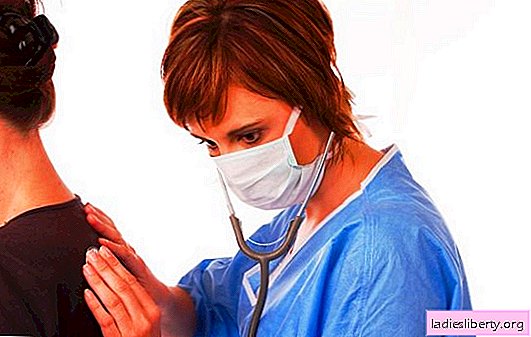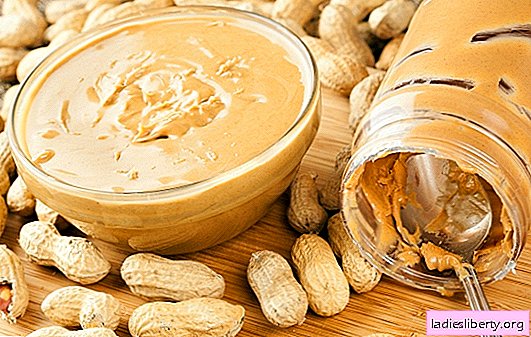
The bronchi are a part of the respiratory system, which play a connecting role between the lung tissue and the trachea. Due to the characteristics of its physiological location, the bronchi are often exposed to various diseases and the negative effects of external factors. Consider in more detail the symptoms of bronchial inflammation and methods of treating this ailment.
Inflammation of the bronchi: causes
Most often, bronchial inflammation develops for the following reasons:
1. Living in a polluted ecological environment.
2. Genetic predisposition to antitrypsin deficiency.
3. Accommodation in areas with high humidity.
4. The presence of chronic inflammation in the body.
5. Not cured pharyngitis or laryngitis, which gave complications in the form of inflammation of the bronchi.
6. Chronic kidney disease.
7. Acute respiratory viral diseases that were not cured or were treated according to the wrong scheme.
8. Regular inhalation of tobacco smoke (not only with traditional smoking, but also with second-hand smoke), dust or other irritating fumes.
9. Caries.
10. Alcohol addiction can lead to the development of chronic bronchitis.
11. Strong hypothermia.
12. Bacterial lesions of the respiratory system usually cause acute bronchitis.
In addition, the following groups of people are most prone to bronchitis:
• people with weakened immunity;
• elderly people;
• pregnant women;
• patients who have chronic inflammation or disease;
• patients with malfunctions of the hormonal system and disorders in the central nervous system.
Inflammation of the bronchi: symptoms and signs
Acute bronchitis has such features and symptoms of its course:
1. The disease develops like a common cold. A person has a slight sore throat, weakness, headaches and a dry cough.
2. After a couple of days, the cough becomes moist, with sputum discharge. A person feels a chill. His body temperature rises.
3. A few days later, the patient suffers from chest pain, constant attacks of coughing and fever.
4. Shortness of breath appears. Sputum acquires an astringent structure. A small amount of blood may also leave. If you do not start treatment, then along with the mucus, the person will begin to cough and pus.
5. If bronchitis "descends" further along the airways, then it will begin to affect the lungs. In this condition, the patient may begin hyperthermia, pulmonary edema and pneumonia (pneumonia).
6. When listening to the patient, wheezing, hard breathing and shortness of breath are clearly visible. It is difficult for the patient to breathe, as he is tormented by coughing attacks.
7. With a prolonged course of the disease in patients, the respiratory rate increases, wheezing and chest pain are observed.
Traditionally, acute bronchitis lasts for ten to fifteen days. If during this time no therapeutic measures are taken, then its symptoms will become less pronounced. In this case, the disease will begin to take a chronic form.
Chronic inflammation of the bronchi has the following symptoms and features:
1. The patient is tormented by frequent coughing and profuse sputum production.
2. When inhaling odors and dust, a person develops coughing fits.
3. The body experiences general exhaustion. Immunity is weakened, making the patient weak and vulnerable.
4. Chronic inflammation of the bronchi leads to scarring in the small airways. This, in turn, affects respiration and significantly complicates it. Thus, it is difficult for the patient to breathe, not only after exercise, but also just when walking.
Inflammation of the bronchi: diagnosis and treatment
If you suspect bronchitis, you need to contact a therapist as soon as possible. After the initial examination, listening and collecting an anamnesis, the doctor will direct the patient to conduct such diagnostic procedures:
• radiography;
• percussion;
• general blood analysis.
Traditional therapy for inflammation of the bronchi involves the following:
1. The appointment of antipyretic drugs to a patient at elevated body temperature.
2. For dry coughs, the use of mucolytics on an herbal basis is recommended.
3. With a wet cough, expectorant oral syrups and tablets should be prescribed.
4. With prolonged bronchitis, it is necessary to do therapeutic exercises.
5. It is useful to make steam inhalations from essential oils, eucalyptus leaves or a decoction of chamomile.
6. During treatment, the patient must comply with bed rest.
7. In acute viral bronchitis, broad-spectrum antibiotics can be prescribed (Amoxiclav, Augmentin). Features of admission and dosage are selected individually for each patient, depending on the age, weight and general condition of the patient.
8. When taking antibiotics, the patient must prescribe medications to maintain and restore normal intestinal microflora. Linex and Hilak forte are considered the best probiotics of this group.
9. For chest pain, pain medication is prescribed.
10. For the discharge of sputum, it is recommended to use the preparations Broncholitin, Lazolvan and Ambroxol.
11. If the patient begins to produce green sputum and at the same time he has a high temperature, then this may be a sign of bacterial bronchitis. In this case, you need to take a sputum sample for analysis and then prescribe suitable antibiotics.
12. In severe cases of the disease, corticosteroids and bronchodilators may be prescribed to the patient.
The duration of therapy depends on the degree of neglect of the disease. On average, acute bronchitis is treated in two weeks. Chronic bronchitis requires long-term therapy (at least two months).
Inflammation of the bronchi: treatment, nutrition, prevention
During the treatment of bronchitis, one should adhere to such nutritional recommendations:
1. Limit alcohol completely.
2. The basis of the diet should be nutritious protein products that enhance immunity (fish, meat, dairy products, especially cottage cheese).
3. Limit the intake of salt, hot spices and sauces, as they irritate the mucous membrane, which further provokes a cough.
4. To fight inflammation, the patient must drink plenty of fluids (at least two liters per day). It can be tea, water, a decoction of dried fruits or compote. The main thing is that such drinks should not be too hot or cold.
5. It is important to abandon the use of sweets, as besides carbohydrates and fats, such food will not bring benefits to a sick person.
6. It is useful to eat foods with lots of potassium (prunes, bananas, dried apricots) daily.
7. If the patient was diagnosed with chronic bronchitis, then he will have to refuse sugar and confectionery for a very long time, since this food many times increases the level of carbon dioxide in the body.
8. With viral bronchitis, it is useful to use products with an antibacterial effect (onions, garlic, chamomile broth).
9. Regular ginger tea will help to cough.
10. To prevent the development of pneumonia in the lungs, it is useful to eat fatty fish. It should be boiled.
11. To increase the level of zinc, it is useful to add pumpkin seeds to the diet.
12. Decoctions of medicinal herbs can be consumed, but it is best to do this before bedtime.
To reduce the risk of developing bronchitis, it is recommended to follow the advice of doctors:
1. Quit smoking completely, since it is in half of the cases that it leads to inflammation of the bronchi in a chronic form.
2. Stop drinking alcohol.
3. Avoid hypothermia and nerve stress.
4. Lead an active lifestyle (play sports to increase immunity).
5. Eat a balanced diet. The diet should be rich in vitamins and nutrients. It is best if the menu is drawn up by an experienced nutritionist or gastroenterologist.
6. It is useful to harden the body.
7. During off-season periods, it is advisable to additionally administer vitamin complexes.
8. Monitor your weight and prevent obesity.
9. In time to treat those diseases that can lead to bronchitis. This is especially true of influenza, acute respiratory viral infections and other pathologies of the respiratory system.
10. Regularly visit the dentist and eliminate any dental diseases.
11. Do not visit public places during outbreaks of acute respiratory illness or wear a protective mask.











